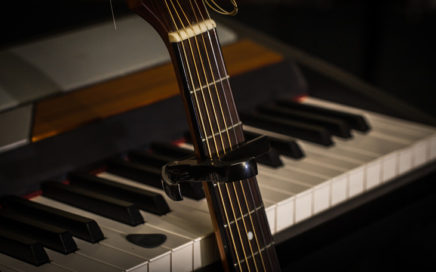
A Bit of Chord Inversion (Slash Chord) Theory
Whenever you play a chord, you’re usually playing it in what’s called root position. This means that the root of the chord (the note represented by its letter name) is going to be the lowest-sounding note — the one that the bass is playing. If you want hundreds of chords to experiment with, “The Essential […]










